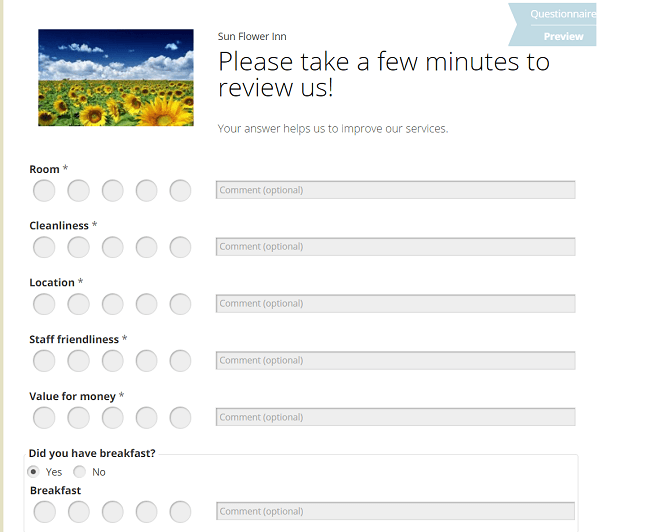Customer Satisfaction KPI and why you need to focus on one or two
Are your guests satisfied with your business? To get ahead, your company needs to know. Set one company customer satisfaction KPI (key performance indicator) or more to measure and track customer satisfaction of your company.
“In a competitive marketplace where businesses compete for customers, customer satisfaction is seen as a key differentiator and increasingly has become a key element of business strategy”.
— Gitman, Lawrence J., The Future of Business: The Essentials —
As you can see, if and how you address your customer satisfaction is a market determinant. Therefore, the topic of customer satisfaction KPI is one that should be addressed within your business. If it has yet to be a focus, read on to see what it is and why it’s important.
What is customer satisfaction?
During the past decades, customer satisfaction has been subject to complex shifts in meaning as well as measurement. Where previously, satisfying a client was confirmation of a job well done; now, customer satisfaction has turned into a more scientific and sizeable marketing value.
Today customer satisfaction is seen as a business term measuring how a product or service meets or surpasses customer expectations. Subsequently, this is why we now have customer satisfaction KPI (s).
Paul W. Farris, professor of Business Administration at the University of Virginia, defines customer satisfaction as “the number of customers, or percentage of total customers, whose reported experience with a firm, its products, or its services (ratings) exceeds specified satisfaction goals.”
Why measure customer satisfaction?
“Customer satisfaction is a leading indicator of consumer intentions and loyalty”.
— Farris, Paul W., Marketing Metrics: The Definitive Guide to Measuring Marketing Performance —
Customer satisfaction goals often relate closely to particular expectations. Let’s say a company advertises their product as superior and their product fails to uphold this claim. Consumers will rate the product worse than if the product had never been advertised at all.
By just listening to the Voice of the Customer, you learn more about your company and gain knowledge about customer perception of your product or service.
Moreover, you develop relevant conclusions about customer retention and customer churn. In the end, these insights help you improve your product or service according to customer demands.
Take the stress out of review and customer feedback management. Find out how with one of our experts.
Talk to your customers
In fact, many companies are convinced they satisfy their customers excellently without ever truly talking to them. According to studies from Lee Resource Inc, 96% of customers do not complain, but just leave and never come back.
This is why you cannot ignore your silent customers. You need to approach and guide them through their experience. Ensure your customer care is top-notch, because “70% of buying experiences are based on how the customer feels they are being treated.”
How to measure it?
The Net Promoter Score (NPS) and the Customer Satisfaction Score (CSAT) are two of the most popular indicators for a customer satisfaction KPI. In the same vein, these are followed by churn rate and retention rate.
A good, effective way to measure customer satisfaction is through an appealing customer survey. Ask your customers to rate you based on a certain scaling and specific variables. For instance, a survey question might ask them to rank your customer service on a scale from 1 to 5. This provides you a solid impression of your customer’s satisfaction regarding customer service, specifically. Therefore, your customer survey allows insight into different categories regarding your customer’s experience.
The scores can be used to measure and monitor your customer satisfaction KPI.

With a survey like this, you learn how your customers feel about your product or service and why they feel that way. But, that’s not all. You even discover insights about how they will relate to you in the future.
For example, will they denounce or praise you? Are they likely to be a repeat customer? Will they recommend you to friends? On a five-point scale, “individuals who rate their satisfaction level as ‘5’ are likely to become return customers and might even evangelize for the firm” says Paul Farris in his Marketing Metrics: The Definitive Guide to Measuring Marketing Performance.
Ongoing quality checks combined with tracking of overall customer satisfaction reduces negative word-of-mouth, which can significantly hinder positive marketing efforts by your business.
A relevant rating is an objective, immediate response to your business approach. Use it and start improving right away!
Don’t lose time. Next, create your individual customer survey and listen to your customers today. If you need help, read our article about how to build a successful customer survey.
Make your customers more valuable
According to eMarketer, you should recognise the value of your customer as
“Acquiring a customer costs 5 to 10 times more than retaining one”
Besides offering an accurate customer perception of your company, measuring and improving customer satisfaction via a customer satisfaction KPI raises the value of each customer.
Studies by InfoQuest show “totally satisfied customers have a repurchase rate that is 3 to 10 times higher than that of ‘Somewhat Satisfied’ customers.”
Bear this in mind and increase your efforts in customer retention instead of spending the majority of your marketing budget on customer acquisition. As a result, your company will benefit in the long run.
Put it in a nutshell
In times when users share their experiences globally in a matter of minutes, it is ever more important to be there for your customers and understand their experiences with your business.
In conclusion, by setting up processes that can substantially improve a customer satisfaction KPI, you will:
- learn more about your company, your services, and your customers
- contribute to customer retention and customer loyalty
- counteract customer churn
- increase the possibility of customer recommendation
- raise the value of individual customers
Consequently, improving your overall customer satisfaction will upgrade your product, reputation, and ‒notably‒ bottom line. It is more than worth it to put some effort into customer satisfaction and research for your best possible solution.
Feeling overwhelmed by your customers expectations? Need a reliable partner to help you gain a good reputation and reduce negative word-of-mouth?
Contact us! With our years of experience in the field of online reviews, we can certainly help you out!
Further reading
- Paul W. Farris et all, Marketing Metrics: The Definitive Guide to Measuring Marketing Performance
Read excerpt here

